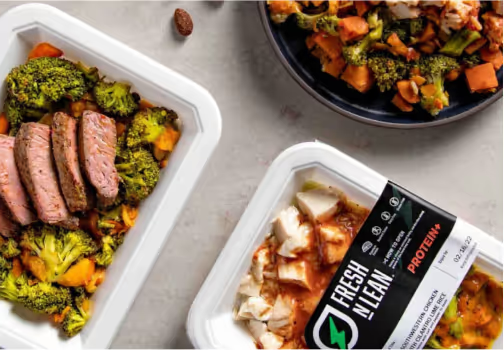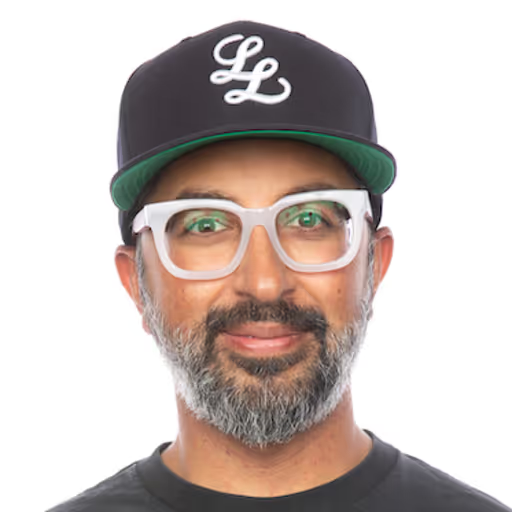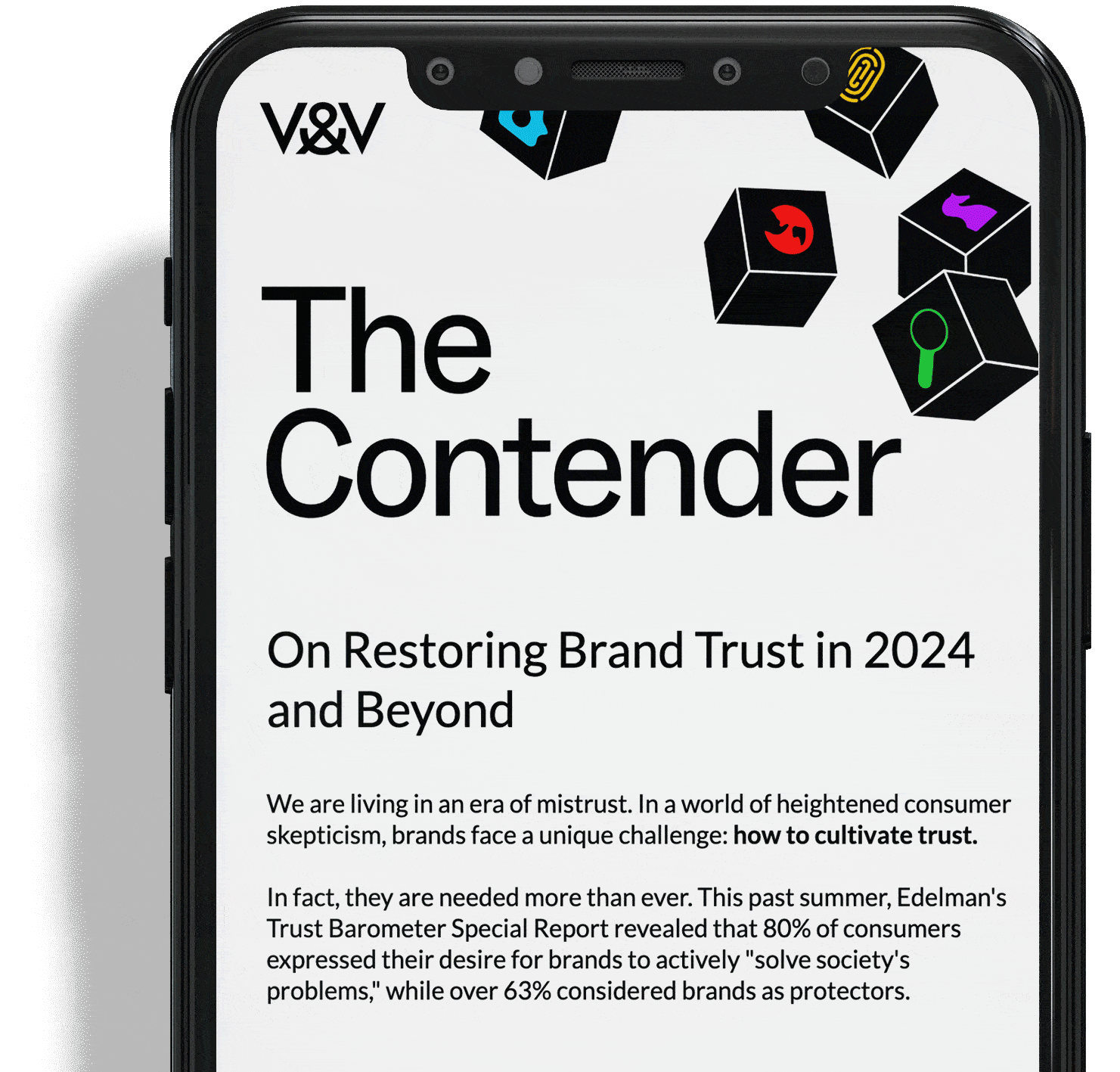An Interview with Rahul Raj for Startupfest
Ahead of his Go-to-Market (GTM) Strategies for Startups workshop, our Founder Rahul Raj sat down with the Startupfest team to share the 5&Vine methodology for all types of Challenger Brands to take on industry incumbents. Whether you’re undoing a product launch or looking to refine your target market, it’s important to have a GTM plan in place, and a long-term Challenger strategy. This post was originally published on the Startupfest blog.
From working with underdogs to the world’s largest retailer, Rahul Raj has spent a lot of time thinking about what it takes to challenge market incumbents. So much so, that he built an agency around the strategy of helping Challenger Brands unseat big players.
What is a Challenger Brand and why does it appeal to you?
A Challenger Brand aims to upend the status quo. Our definition includes the pursuit of both profit and purpose, not simply that they have a better product. It’s what they do, the value they deliver for the consumer and how they deliver it.
Challengers are drawn to industries that are getting lazy and they aim to redefine consumer expectations. For example, when something like Google Docs, Sheets and Slides came out, it challenged Microsoft’s premise that you needed to purchase software and was further differentiated with strong collaboration capabilities. They put all this in the cloud and completely redefined what we thought was possible.
There’s also a notable set of Challenger Brands that exist on the social spectrum. For example, TOMS Shoes has a model that re-conceives how our purchases can be socially beneficial. Warby Parker has expressed a similar model. They’re both able to satisfy consumers needs and society’s needs.
Can you reveal a bit about the methodology you use to boost the presence and revenue of Challenger Brands?
The main thing is figuring out what they want to be in the world, so I work with them to define what success looks like. Secondly, to identify who the incumbents are and what they’re playbook is.
Both humans and organizations are creatures of habit and tend to respond formulaically to challenges — be that pricing or the launch of a new product. I try to decode that playbook so we can figure out how they’re likely to respond when we challenge them.
If you’ve anticipated how someone is likely to respond, you can figure out a way to go head to head with them and still win. Sometimes what people will do is just ignore you. Other times, they come back fighting or work to discredit you. Either way, knowing how they’re likely to respond allows you to develop a strategy to chip away at their market share, if not pull the rug out from under them entirely.
There’s one other component to it. We first spoke about what success looks like, second who the incumbents are and how they’re likely to respond, the third is ensuring that they have a right to win. That means looking at their product or service composition and figuring out how it is definitively better and satisfies the consumer’s needs in a more profound way than the incumbent.
It’s not just about having a great strategy and great marketing. The core of it has to be better. I end up working with startups and their management teams to either retool their product or service, or their operations to enable them to be better, and then I work to make that real.
Can you share a case study of how you’ve been able to apply that methodology to a brand?
I’ll tell you how I came up with this playbook. I joined a company called ecobee, a Canadian smart thermostat company. When I joined, it was quite nascent: single-digit millions in sales, a B2B company with a product that wasn’t particularly attractive and had no consumer presence whatsoever.
There were two incumbents in the industry. One was Honeywell, which held the number two position, and the second was Nest, that held the number one position. In the case of Honeywell, they were the leading B2B product. Nest was the leading consumer product.
The typical response of Honeywell was to tighten its relationships with contractors. Instead of simply selling their thermostats, they started to give them away as a gift with purchase if you bought some of their equipment — air conditioners, furnaces, things along those lines. Their playbook was: we can always beat you on price because we’re a multi-billion dollar conglomerate that is not dependent on thermostat sales alone.
In the case of Nest, their default was to silence you by ramping up their advertising and marketing spend, and continue to stress their design credentials. Honeywell was the original creator of the thermostat, so they relied on legacy “we know this space better than anyone else because we created the thermostat” and Nest redesigned it.
What we did at ecobee was: one, set our sights on being the number one consumer brand, period… not the number one contractor brand. That in itself was a major unlock for the organization because until that moment they had no desire to be a consumer company.
The second was we designed a new product that addressed the fundamental pain point that all consumers experience, which is uneven temperatures in their home. We did that with the launch of room sensors. A room sensor would measure the temperature in the room that you were in, not just where your thermostat is located. That was a big, big unlock.
Then we designed something that was as beautiful as Nest, if not more so. We had the raw materials ready to take on the industry incumbent. Our position was “ecobee is for homes with more than one room.”
Digging at the competition, we knew that Nest had a stunning industrial design, but they hadn’t thought as deeply about the design of the product functionality. It was superficial design, not core design, which is designed to solve a consumer’s pain point.
Within 12 months of launch, we unseated Honeywell and became the number two thermostat brand in North America. Two years later, sales were 12x and we won +30 percent of the market share. It was a great example of how a Challenger could unseat the industry incumbent by following the model I described earlier.
When we’re talking about Challenger Brands, we don’t usually think of Walmart, but you were a big part of Walmart’s sustainability efforts. How did your time there feed into and inform what you’re doing now?
Walmart was a phenomenal experience because it got me into the mind of Goliath. In working with Challenger Brands, it’s really important to understand how Goliath thinks. That experience helped me see the pace at which Walmart could move and therefore the amount of time that a Challenger would have to make a dent.
I also got great experience understanding what playbook the incumbent falls back on and where they’re likely to be vulnerable. I think Walmart is a phenomenal company that is still finding ways to stay relevant despite Amazon’s ascent.
You’ve been working with this methodology for quite some time, even if you didn’t define it as such.
I consider myself an underdog. It’s been like that for my entire existence. I feel like there’s a meaningful personal connection that I have: the world often underestimates Challengers, be it humans or brands. It’s great to be able to succeed without always being braggadocious about it — finding a way to succeed by being authentically you.
It’s what I try and help brands do, and it’s what I try and do on a personal level. That’s the essence of what we’re trying to do at 5&Vine: help Challenger Brands win, but doing so in a way that delivers both profit and purpose.
You can see Rahul Raj speak at Startupfest this summer, July 9–12, 2019. Learn more here.














